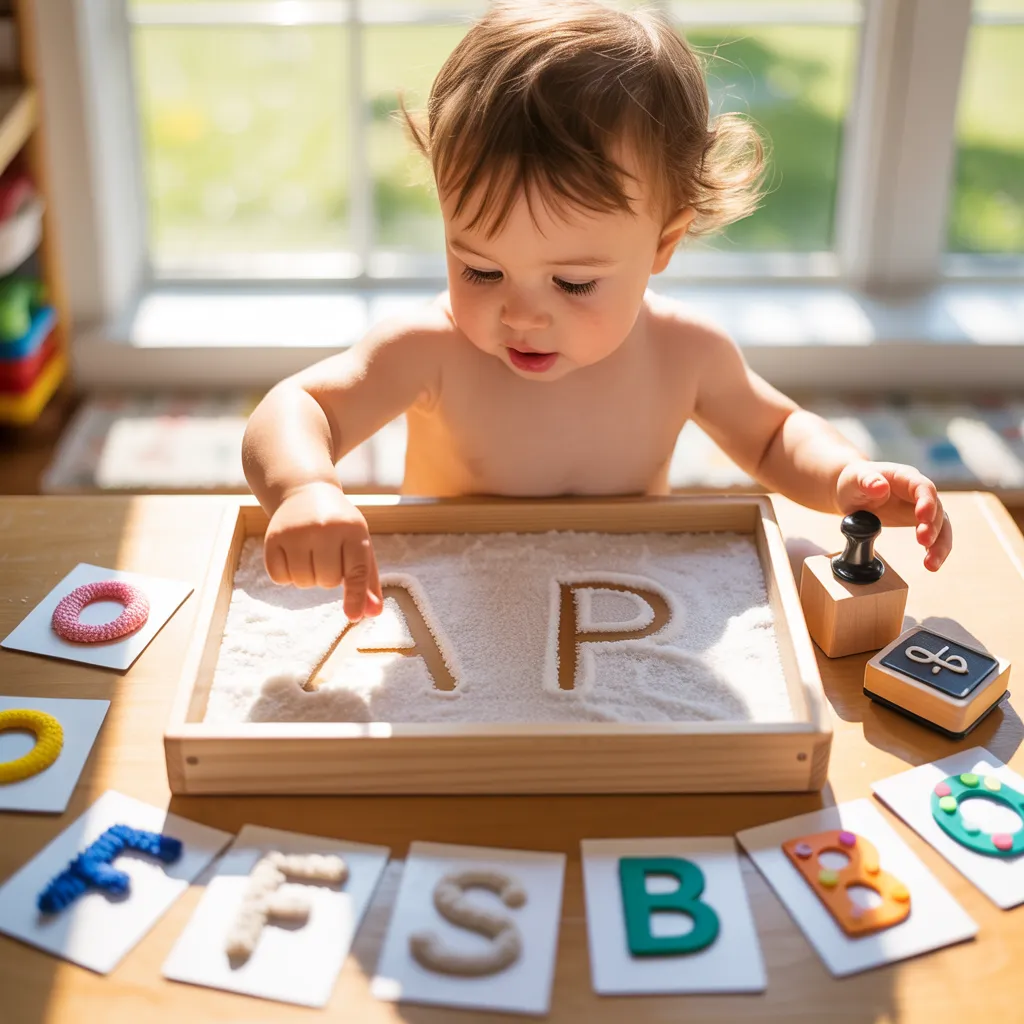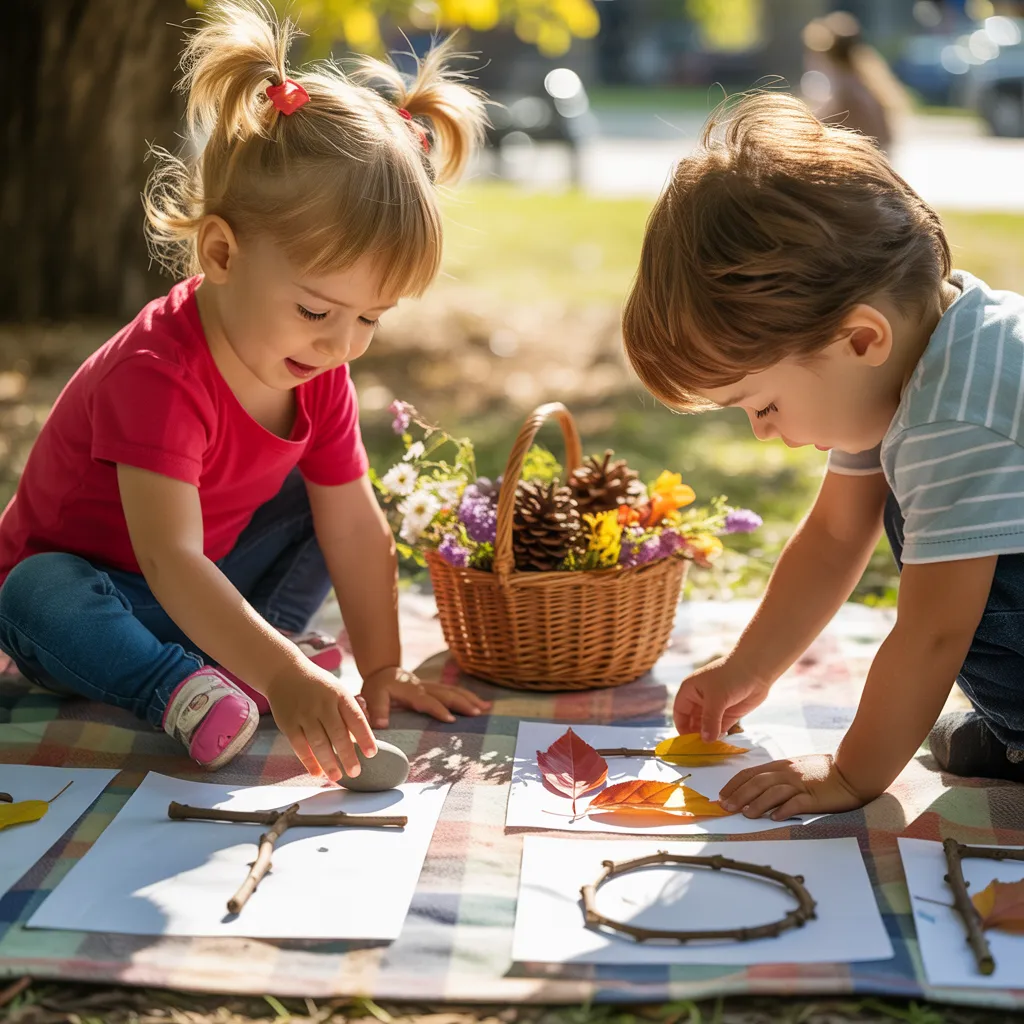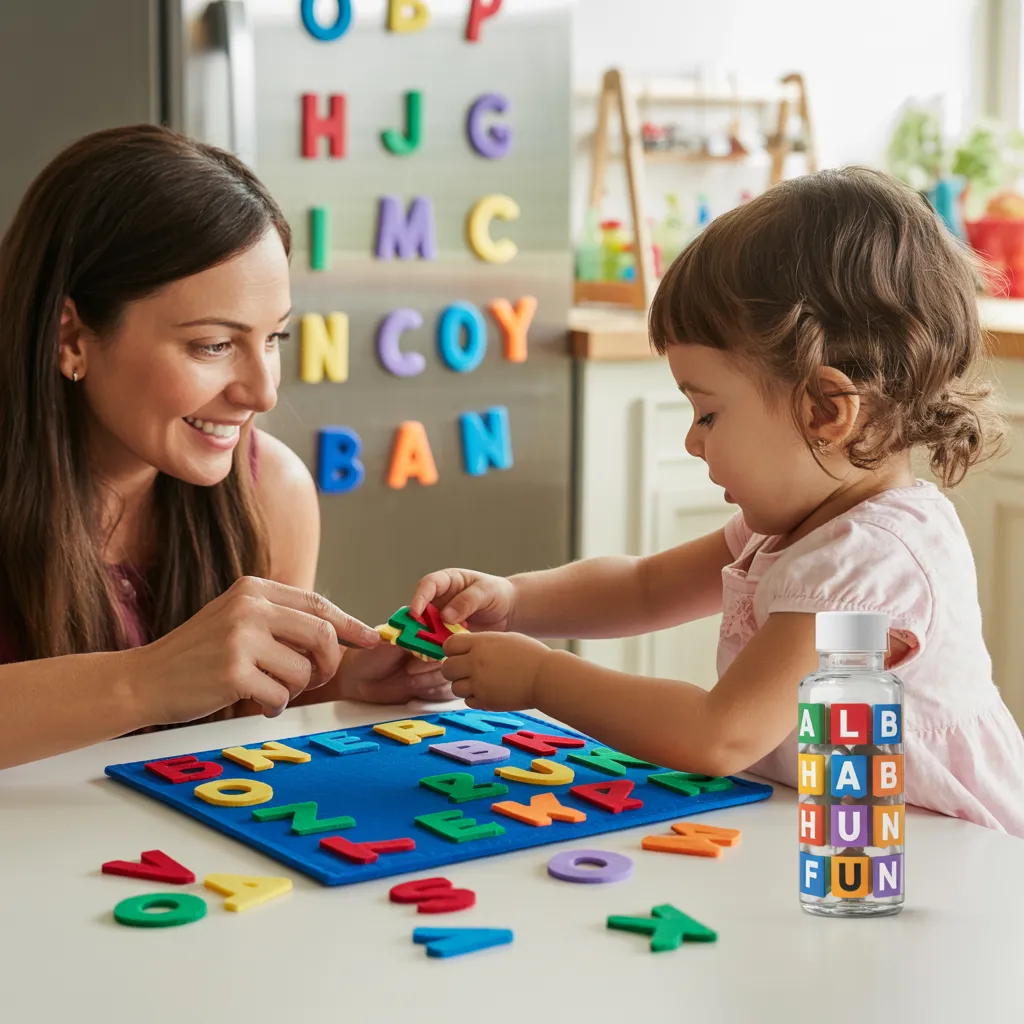Introducing letters to toddlers through hands-on activities creates a foundation for literacy that’s both meaningful and memorable. Alphabet crafts for toddlers transform abstract symbols into tangible experiences, helping little ones connect with letters in ways that engage multiple senses and learning styles. When young children squish, paint, cut, and create with letter-focused projects, they’re not just having fun—they’re building neural pathways that support letter recognition, phonemic awareness, and pre-reading skills. Unlike flashcards or worksheets, which may feel disconnected from a toddler’s natural way of exploring the world, alphabet-themed crafts embed learning within play, honoring how toddlers naturally acquire knowledge. Whether you’re a parent seeking educational activities for home, a teacher designing classroom experiences, or a caregiver looking for meaningful ways to support development, these creative approaches to letter learning offer accessible, affordable options that grow with your child’s abilities and interests.

Age-Appropriate Alphabet Crafts for Toddlers by Developmental Stage
Understanding your toddler’s developmental readiness helps you select alphabet crafts that build confidence rather than frustration, creating positive associations with letters from the very beginning.
Simple Alphabet Crafts for Young Toddlers (12-24 months)
For the youngest toddlers just beginning to explore their world through touch and movement, alphabet crafts should focus on sensory experiences rather than letter recognition itself. Create edible finger paint using yogurt colored with food dye, allowing babies to make marks on paper while experiencing different textures. Though they won’t form letters intentionally yet, this builds pre-writing skills and familiarity with art materials. Offer large foam or magnetic letters during bath time, naming each one as your toddler plays without expectation of memorization. Make simple letter stamps by gluing foam letters to wooden blocks, letting little ones experiment with stamping patterns. These introductory alphabet crafts for toddlers build hand strength, coordination, and positive feelings about lettered materials that create readiness for more structured learning in later stages.
Interactive Alphabet Crafts for Older Toddlers (2-3 years)
As toddlers develop greater dexterity and longer attention spans, alphabet crafts can become more intentionally focused on letter shapes and sounds. Create textured letter collages by cutting letter shapes from cardboard, then helping your toddler glue materials with different textures (fabric scraps, sandpaper, button, pom-poms) onto each letter. Make letter-specific sensory bins filled with items starting with a focus letter—B could feature beans, buttons, and small balls to sort and explore. Craft simple alphabet puppets using paper bags decorated to resemble animals or objects that begin with specific letters, then use these puppets for storytelling that reinforces letter-sound connections. These crafts engage toddlers’ growing interest in categorization and matching while providing multisensory experiences that strengthen letter awareness through playful interaction.
Sensory-Rich Alphabet Crafts for Toddlers
Young children learn most effectively when they can engage multiple senses, creating stronger neural connections that enhance memory and comprehension.
Tactile Letter Activities That Enhance Recognition
Transform alphabet learning into a full-body sensory experience with these texture-focused alphabet crafts for toddlers. Create raised salt writing trays by spreading colored salt on cookie sheets, demonstrating how to trace letter shapes with fingers before inviting toddlers to explore. Make textured letter cards by tracing letters on cardboard and applying different materials—sandpaper for S, cotton balls for C, rope for R—creating a tactile alphabet that little fingers can explore through touch. Design playdough letter mats by laminating paper with letter outlines, encouraging toddlers to roll playdough snakes and arrange them to form letters. These hands-on activities build letter familiarity while developing the fine motor control needed for future writing skills, allowing children to literally feel the distinctive shapes that make each letter unique.
Edible Alphabet Crafts for Multisensory Learning
Combining food exploration with letter learning creates memorable experiences that engage taste and smell alongside visual and tactile senses. Arrange fruit and vegetable slices into letter shapes during snack time—banana curves for B, cucumber rounds for O—naming each letter while enjoying a nutritious treat. Bake simple alphabet cookies, providing toddler-friendly letter cutters and offering assistance with rolling and cutting dough. Create letter-shaped sandwiches using cookie cutters, particularly focusing on letters from your child’s name to boost personal connection. While these alphabet crafts for toddlers require adult supervision and assistance, they create powerful learning moments by connecting letters with the deeply engaging experience of food, making abstract symbols concrete through everyday activities that toddlers find inherently interesting.

Nature-Inspired Alphabet Crafts for Toddlers
The natural world provides abundant, free materials for creating meaningful alphabet experiences that connect letters with environmental exploration.
Outdoor Alphabet Collection Adventures
Transform neighborhood walks into alphabet scavenger hunts by helping toddlers collect items that represent different letters. Gather sticks to arrange into letter shapes on the ground, take photos of these ephemeral creations to revisit later. Collect leaves, pinecones, rocks, and flowers to sort by initial sound back at home. Press flowers between wax paper to create decorations for cardboard letters, connecting outdoor experiences with alphabet awareness. These nature-based alphabet crafts for toddlers build environmental awareness alongside letter knowledge, helping children recognize that letters represent real objects and experiences in their world while fostering appreciation for natural materials as creative resources.
Seasonal Alphabet Projects That Grow With Your Child
Connect letter learning with the changing seasons through themed alphabet crafts that create cyclical learning opportunities. In spring, plant seeds in soil arranged in letter shapes, watching them grow into living letters over time. During autumn, collect colorful leaves for leaf rubbings over letter stencils or to glue onto letter-shaped cardboard. In winter, arrange pinecones, evergreen sprigs, and berries to form letter shapes for holiday decorations. These seasonal activities create repeated exposure to alphabet concepts throughout the year, reinforcing letter knowledge through changing materials and themes that maintain freshness and interest in alphabet exploration.
No-Mess Alphabet Crafts for Busy Households
Clean, simple activities that require minimal setup and cleanup make consistent alphabet exposure practical for families with limited time or space.
Five-Minute Alphabet Crafts for Toddlers
Not every alphabet activity needs elaborate preparation or materials. Create instant alphabet crafts by cutting letters from junk mail or magazines, sorting them into alphabet containers. Make letter-matching clothespin games by writing letters on clothespins that toddlers can match to corresponding letters written on a container rim. Design simple alphabet hunt bottles by filling clear plastic bottles with rice and small letter beads or tiles, creating independent exploration tools that contain all materials within a sealed container. These quick, contained alphabet crafts for toddlers offer meaningful learning opportunities during small pockets of time throughout busy days, proving that literacy development doesn’t require elaborate setups or special materials.
Reusable Alphabet Craft Materials for Sustainable Learning
Create lasting alphabet resources that evolve with your child’s development while reducing waste and saving money. Sew simple felt letter sets that can be used for countless activities—sorting, matching, building simple words as skills develop. Make homemade alphabet blocks by covering small boxes with paper and adding letter stickers or drawings. Design a magnetic alphabet board using an oil drip pan from an automotive store, providing a vertical surface for exploring store-bought or homemade magnetic letters. These durable alphabet crafts for toddlers create a consistent literacy-rich environment while demonstrating sustainable approaches to educational materials, teaching environmental values alongside letter knowledge.

Conclusion: Embracing the Journey of Alphabet Discovery
The most effective alphabet crafts for toddlers aren’t those that result in perfect, Instagram-worthy creations, but rather those that engage young children in joyful exploration of letter shapes, sounds, and meanings. By focusing on the process rather than the product, you create positive associations with literacy that motivate continued interest in letters and their purposes. Remember that consistency matters more than complexity—simple activities repeated regularly build stronger skills than occasional elaborate projects.
As you introduce alphabet crafts to your toddler, follow their lead in terms of interest and engagement. Some letters might spark particular fascination, perhaps those in their name or that represent favorite objects. Build on these natural interests, allowing your child’s curiosity to guide your alphabet adventures together. Celebrate each moment of engagement without pressure for memorization or mastery, trusting that these playful experiences create the foundation for future reading success.
By integrating alphabet crafts for toddlers into everyday life—through sensory play, outdoor exploration, food preparation, and quick activities during transition times—you’re showing your child that letters are everywhere and that learning to recognize and use them opens doors to greater understanding of the world around them.
12 Powerful Alphabet Flashcards Printable Sets to Revolutionize Early Learning
Frequently Asked Questions About Alphabet Crafts for Toddlers
When should I start introducing alphabet crafts to my toddler?
You can begin incorporating letter-rich experiences into your child’s environment as early as 12 months, focusing initially on exploratory activities rather than recognition. For the youngest toddlers, emphasis should be on sensory experiences with letter shapes—touching textured letters, manipulating large wooden or foam letters during bath time, or making marks with fingers in paint or sensory materials. Around age 2-2.5, many children develop greater interest in the names and purposes of letters, making this an ideal time to introduce more intentional alphabet crafts for toddlers. Look for signs of readiness such as pointing to letters in the environment, asking about written words, or showing interest in books. Remember that developmental timelines vary significantly between children, so follow your individual child’s cues rather than rigid age recommendations.
Should I teach letters in alphabetical order when doing crafts?
While the alphabet song provides a familiar framework, most early childhood educators recommend prioritizing meaningful letters rather than strict alphabetical order when introducing alphabet crafts for toddlers. Consider starting with letters in your child’s name, as these have personal significance that naturally boosts motivation and retention. Letters that begin favorite words (B for ball, D for dog) also create stronger connections than arbitrary sequence. Another approach focuses on letters with distinctive shapes that are easier to recognize and less easily confused (like O, X, S) before introducing visually similar letters like b/d or m/n. Whatever sequence you choose, remember that toddlers learn through repeated exposure and meaningful connection rather than systematic instruction, so let interest guide your craft choices rather than feeling obligated to march through the alphabet in order.
How do I handle my toddler’s short attention span during alphabet crafts?
Toddlers typically have attention spans that last for just a few minutes, particularly for activities directed by adults rather than self-chosen exploration. Design alphabet crafts for toddlers with this developmental reality in mind—prepare materials in advance, keep instructions simple, and be ready to follow your child’s lead when interest wanes. Breaking activities into small steps across several days can work well; perhaps cut letter shapes one day, decorate them the next, and use them for games on a third day. Watch for signs of fatigue or frustration and end activities before negative associations form. Remember that brief, positive experiences repeated consistently build stronger skills than occasional longer sessions that push beyond attention capabilities. If a craft isn’t capturing interest, set it aside without judgment and try a different approach another time, perhaps in a different setting or using different materials.
How can I accommodate multiple developmental levels in alphabet crafts?
Families with children of different ages often struggle to find activities that engage everyone meaningfully. Fortunately, many alphabet crafts for toddlers can be adapted to challenge older siblings while remaining accessible to younger ones. When creating art with letter themes, toddlers might focus on exploring materials and recognizing completed letter shapes, while preschoolers add details or create patterns, and school-age children incorporate the letters into words or sentences. During nature collections, younger children might gather items while older ones categorize them by initial sounds or create more complex letter arrangements. This multi-level approach not only accommodates different abilities but also creates valuable opportunities for siblings to learn from one another, with older children reinforcing their knowledge by « teaching » younger ones and toddlers benefiting from modeling and encouragement from their siblings.
